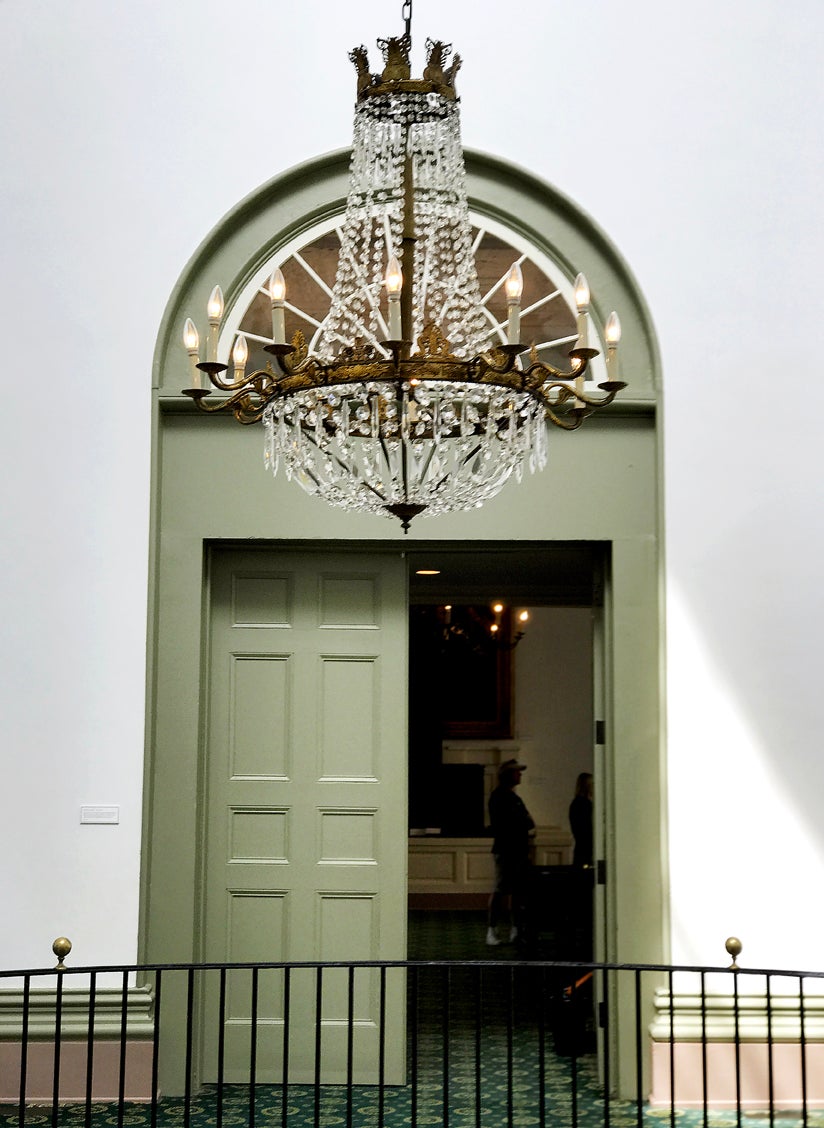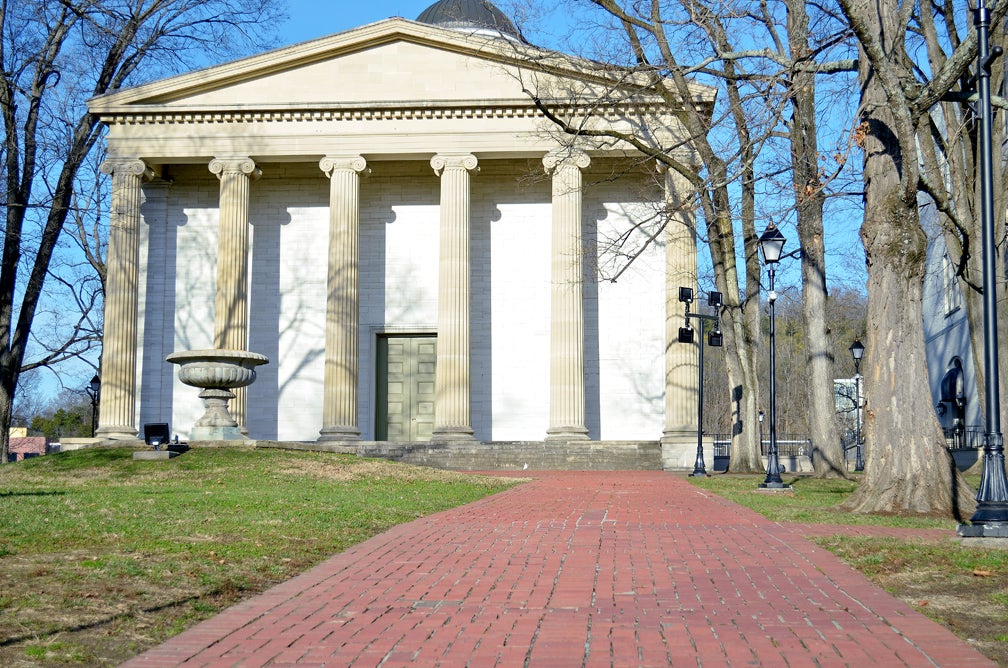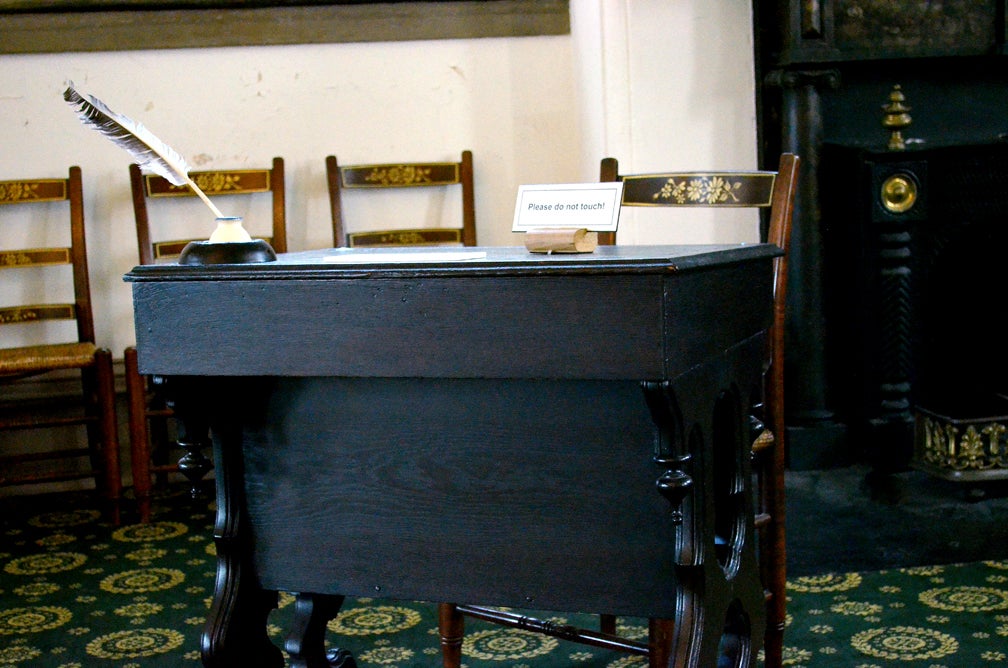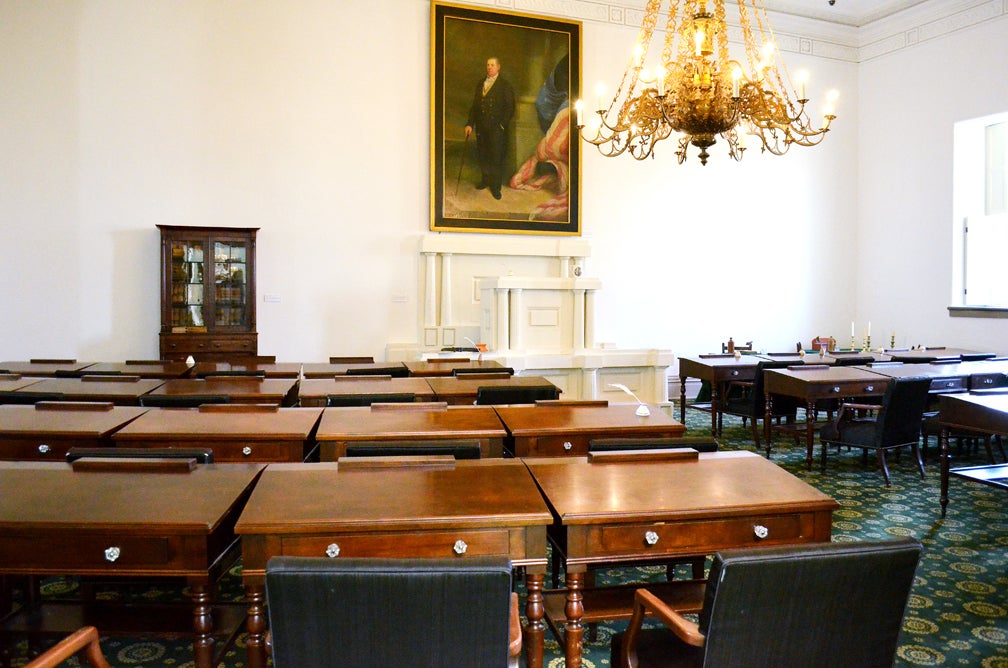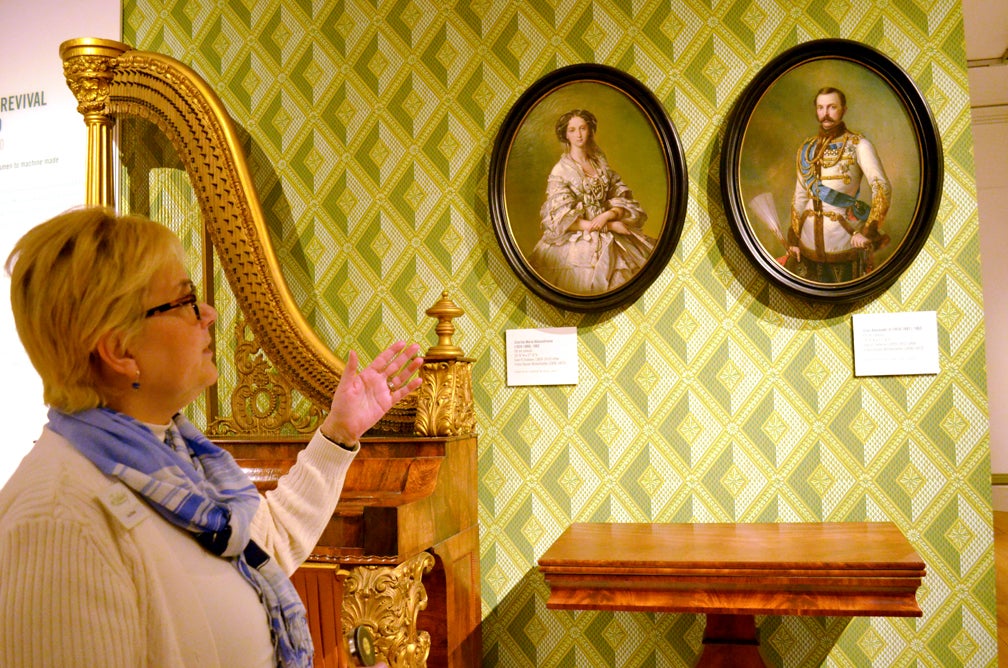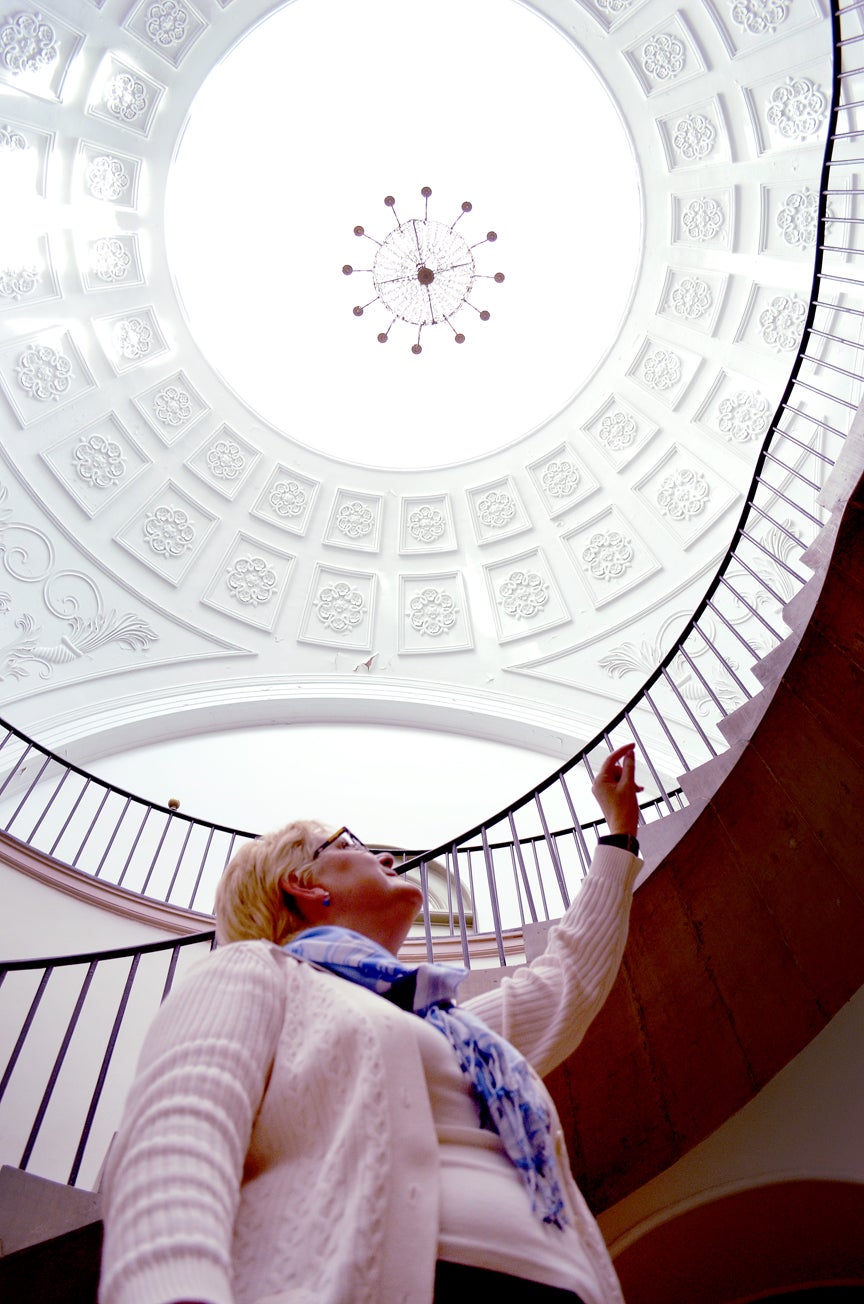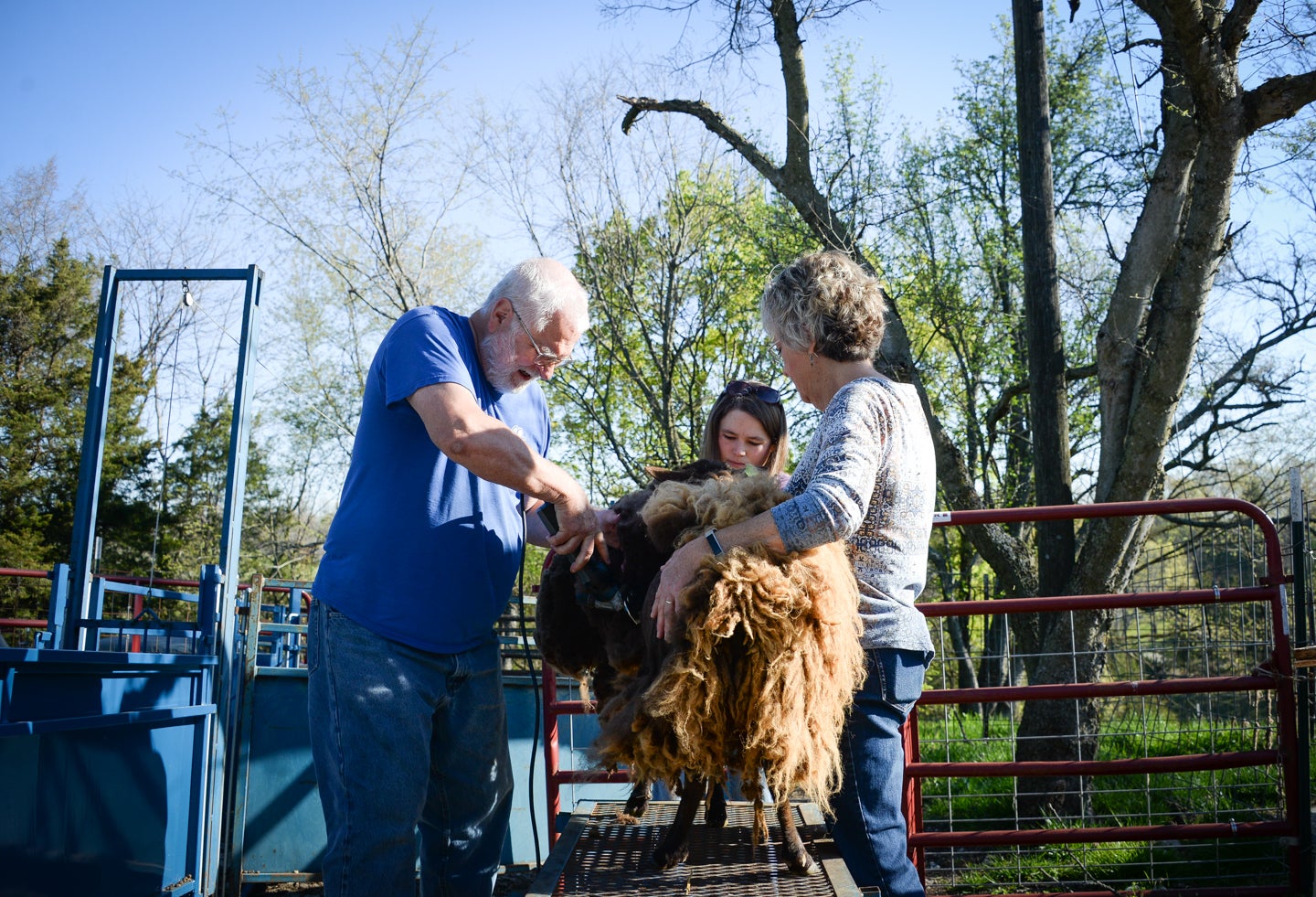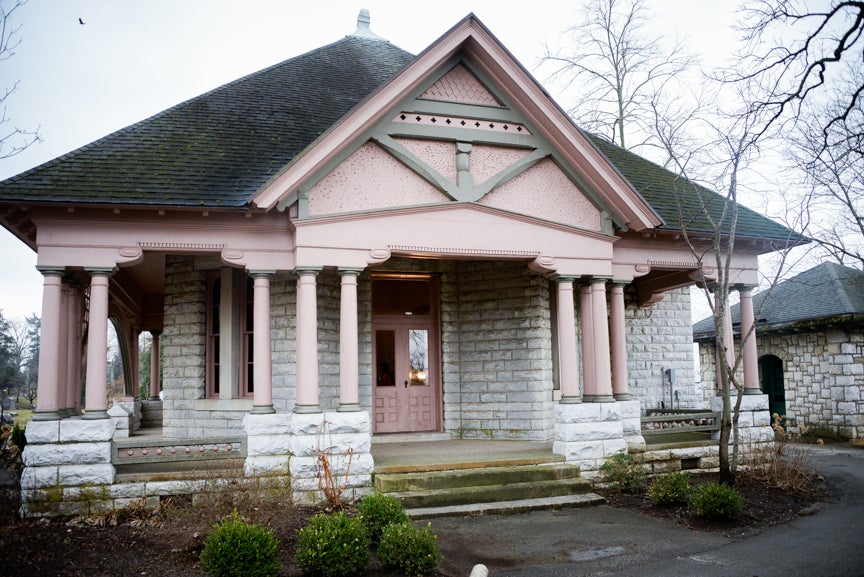By Bryan Reynolds,
The Old State Capitol may no longer house the Commonwealth’s Representatives and Senators when the legislature is in session but it doesn’t just sit on Broadway Street vacant. The building sees traffic from student field trips, tourists and also houses exhibits from the Thomas D. Clark Center.
“The Old State Capitol has about 22,000 school visitors each year,” said Kentucky Historical Society Marketing Communications Administrator Janene Zaccone. “A lot of times they will combine a visit with us with a visit to the new state Capitol.”
The majority of students visiting the Old State Capitol on field trips are fourth and fifth graders. Students come from all over the state to visit the building. Zaccone said during the 2017-2018 school year, student field trips came from 69 different Kentucky counties to visit the building.
During the field trips, students reenact a state Senate session in the old Senate Chambers. In 1850, the Senate debated a bill concerning whether a fence should be erected around the Capitol grounds, Zaccone said.
“Students fill all the roles in the senate, discuss the bill and vote yes or no,” she said. “If the bill passes they send it to the House of Representatives. This teaches them the lawmaking process.”
The Kentucky legislature did vote to build the fence in 1850, she said.
The reenactments can get lively, filling the halls with the chatter of excited elementary students.
Students also visit the old House of Representatives Chamber during field trips to learn how the passage of time changes things. The drawers of the historically accurate desks in the representative chamber campaign period provide examples of things legislators would have brought to the chamber from home.
Portable inkwells and metal nib pens, hair pomade, almanacs, period toothbrushes and an assortment of other items can be found in the desk drawers, Zoccone said. Studying those items shows students how similar those items are to what is presently being used. At the same time, those period items show how much things have changed in over 100 years.
The senate and representative chambers were not always in the condition they are at present. The Old State Capitol was used for a variety of different things from 1900 until 1921 when the Kentucky Historical Society moved into the building, said Director of Historical Resources Sara Elliott.
“This was the original headquarters for KHS,” she said. “Museums originally were cabinets of curiosities. They had cabinets that had all these bazar things in it. Well, both of these rooms were like open storage.”
A random assortment of artifacts were crammed into the senate and representative chambers. Civil war rifles were stuffed in next to flag polls and furniture, she said. There wasn’t a lot of order to the storage.
Efforts were made to improve the condition of the chambers over the decades leading to a restoration project in the 1980s. Though the term restoration didn’t mean then what it does now, Elliot said.
“Techniques were different back then,” she said. “They weren’t as scientific back then. Things like paint analysis were not as accurate as they are today.”
Elliot said the desks currently in the Senate chambers may not be historically accurate. KHS doesn’t have any of the original 1800s era Kentucky Senate desks. The desks are reproductions of those used in the U.S. Senate in the 1850s, she said.
“The only thing that’s original to the space is the chandelier and the portraits,” Elliot said. “These were all commissioned or given to the state at the time this building was used as the state Capitol.”
Four massive portraits of Isaac Shelby, the first and fifth governor of Kentucky, Henry Clay, a Kentucky senator and representative during the 1800s, Zachary Taylor, the 12th U.S. president and the ninth U.S. President William Henry Harrison, are hung on the walls around the chambers.
The chandelier was originally gas powered but was converted to electric at some point during the early 20th century, Elliot said.
“The gas from the chandelier was created by a mechanism out in the back, behind the building. This building was used hard.”
The building was heated with open fires, each senator was issued a spittoon, candles were used for lighting, everyone was smoking and gas lighting was very messy, Elliot said.
“The building had some maintenance issues. Plus, about three years after it was built the roof started leaking. We’ve had problems with the roof continually since the 1830s.”
The Kentucky Historical Society offers different types of tours of the Old State Capitol. Guided tours can be scheduled and begin at the Thomas D. Clark Center. Guided tours are available from Dec. 8 to March 8 on Saturdays at 10:30 a.m., noon, 1:30 p.m. and 3 p.m. From March 9 until Dec. 8 guided tours may be scheduled Tuesday through Saturday at 10:30 a.m., noon, 1:30 p.m. and 3 p.m.
One of the things that fascinates visitors about the old Capitol is the free-standing staircase leading to the second floor.
“The Keystone appears to be what’s holding the staircase in place,” Elliot said.
It doesn’t only impress the fourth graders who visit the building but also engineers,” Zoccone said.
In 180 years the stairs have never faltered, Zoccone and Elliot said. The stairs have remained standing and baffled students and engineers for generations.
The Old Capitol was constructed using slave labor, prison labor and other free labor. It took three years to build, Elliot said.
Despite the building being constructed partly by slave labor, the intricate decorative plaster in the front section of the building was done by a free black man named Harry Mordecai, Elliot said.
“He was a very successful plaster,” she said. “He died having a lot of people owing him hundreds of dollars. And this was the 1830s. So if somebody owed you $200 in the 1830s that was a lot of money. He was very talented.”
The section of the Old State Capitol that once housed the federal court and jail was originally separated from the main building, Elliot said. A door on the right side of the building was the only entrance.
It was walled off from the same building to display the separation of the legislative branch and judicial branch, she said. The court cannot be replicated and used the same way the senate and house chambers are because there is no photographic evidence of what the court looked like, she said.
The two rooms are now connected to the same building and the KHS instead uses the space to house exhibits they don’t have space for in the main museum. Currently, the federal court is home to the “Great Revivals: Kentucky Decorative Arts Treasures,” exhibit.
The art exhibit is currently home to some Kate E. Perry Mosher’s carving. Mosher was born in Warsaw. During the civil war she was a Confederate sympathizer who helped confederate prisoners escape Rock Island prison in Illinois, Elliot said.
“She was interrogated by union officials but she was definitely convincing enough to not go to jail,” she said.
She returned to Northern Kentucky and learned wood carving. A cabinet carved my Mosher is on display in the old capitol as part of the exhibit.
The exhibit also has a Giraffe, or harp-piano, on display. The Giraffe is a piano with the wires on the top of the piano housed in a harp shape, Elliot said. It is played just like a piano.
Next to the Giraffe are two portraits of Czar Alexander II and his wife Maria. The portraits were donated to KHS by the abolitionist and ambassador to Russia during The Civil War Cassius M. Clay. Clay was given the paintings while in Russia.
Alexander II was the Czar who freed the serfs in Russia, Elliot said.
“He and Clay had a lot in common,” she said.
The Old State Capitol may not house the state senate or house when the legislation is in but that doesn’t mean the building sits there empty, Elliot said. With the tourists and students coming and going it’s almost as busy as it was before being replaced by the new Capitol.

